We had the opportunity to visit the 2,000 year old Army of Terra Cotta Warriors. This experience was right up there with our visit to the Great Wall.
If you are unfamiliar with what I am talking about, the Chinese Emperor Qin Shi Huang. He was the emperor who first united China in 221 B.C. (also started building the Great Wall). This army was to protect him in the afterlife. His mausoleum is also believed to contain and entire palace (complete with halls and offices, as well as the warriors). We don’t know, however, as a large portion of the site has yet to be excavated. We do know that there are at least 6,000 life size soldiers (all 5’11” – 6’1″) in full battle formation including weapons and true to life poses. Most significantly, while there are only a handful of different figures (infantry, archers, officers and generals), each one has a unique face.
The site was only discovered in the spring of 1974 by a local farmer digging a well. He happened upon one of the remnants of the warriors. As it turned out, his discovery was right on the edge of the massive field of warriors. Now, that fortunate farmer can be found just about every day at the site to sign autographs and accepts donations (as you can imagine, he was compensated by the communist government). However, surprisingly, he doesn’t allow anyone to take his picture.
Now, on to the site…
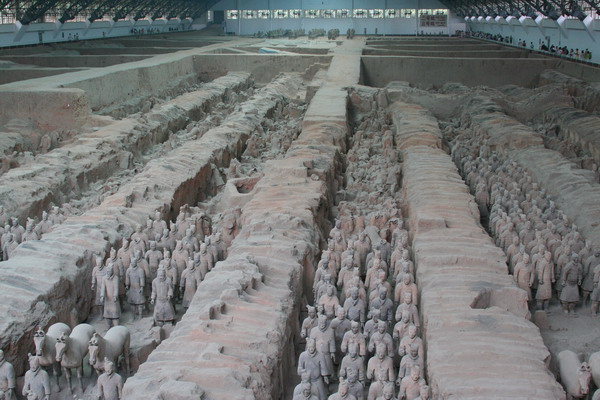
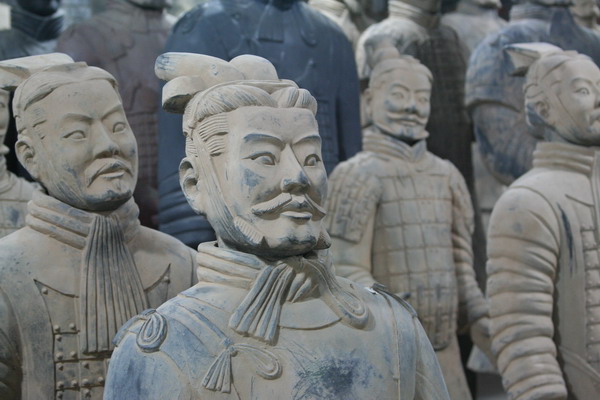
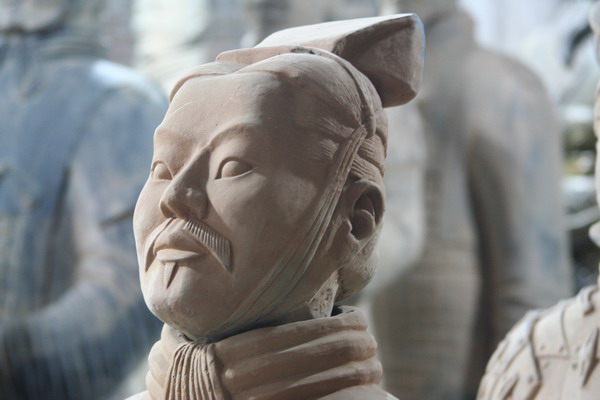
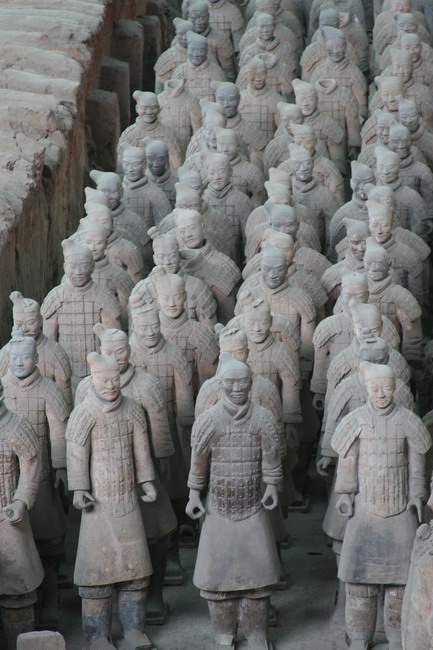

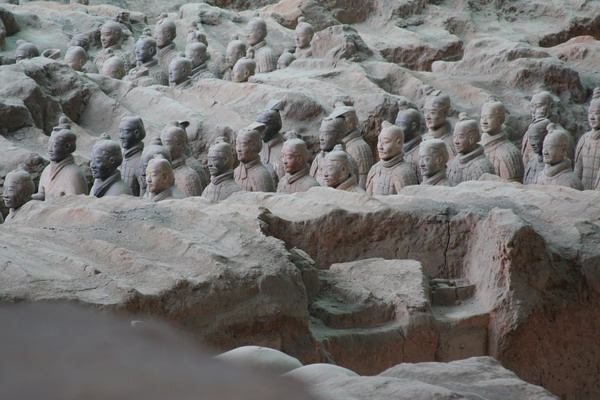
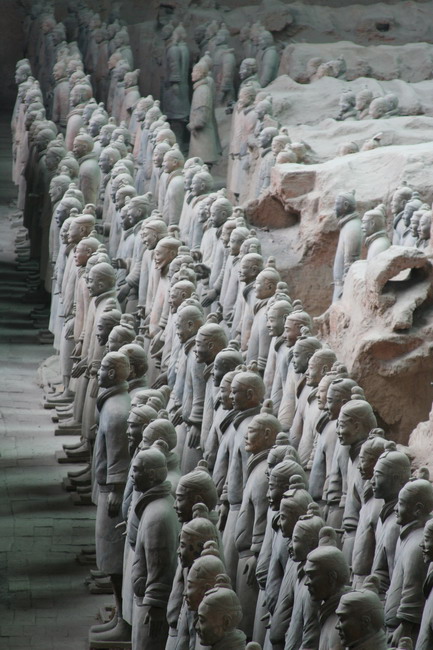
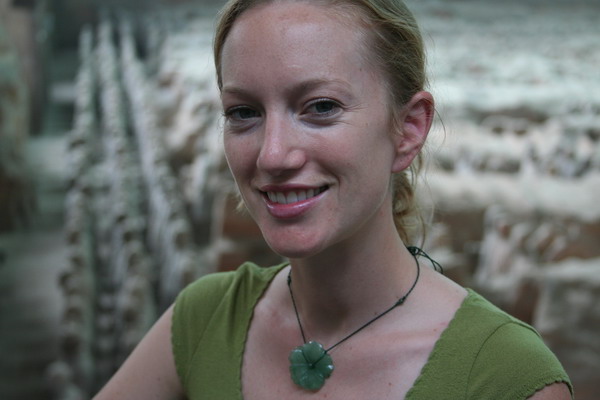
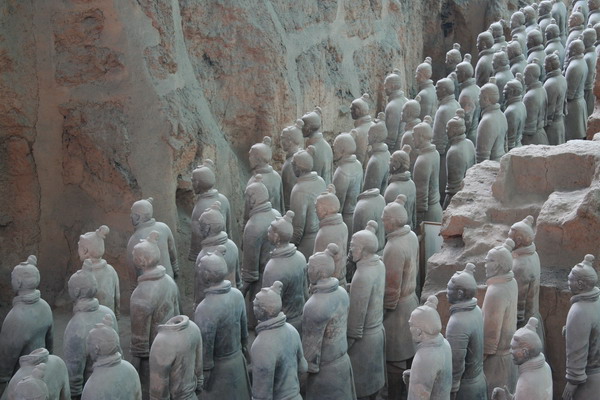
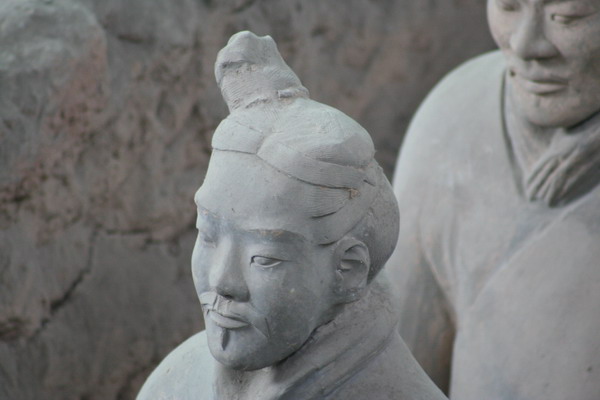
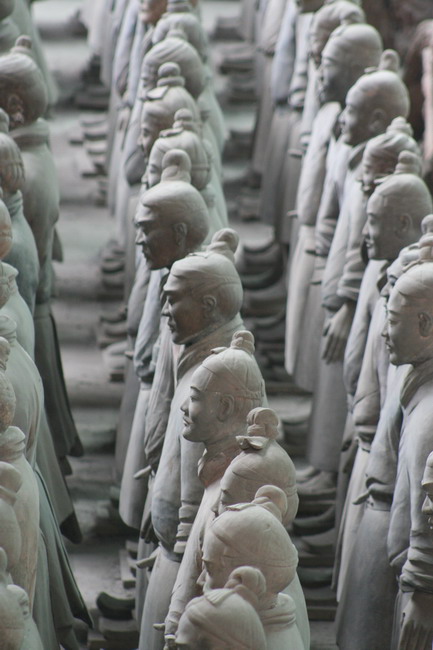
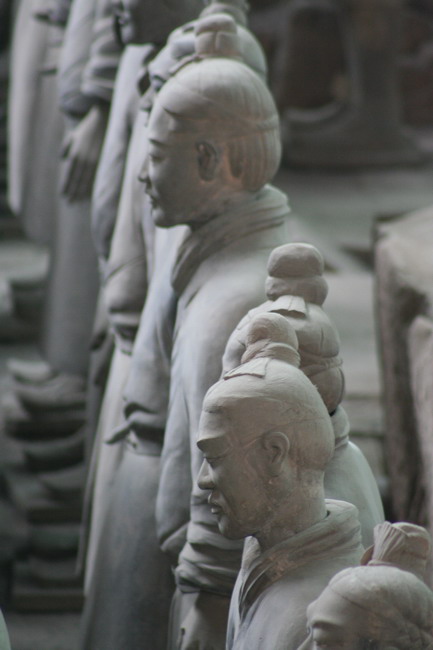
You can see that not all of the warriors were perfectly perserved. Some were destroyed by marauding looters who wished to undo the work of the emperor, and others were from more natural causes.
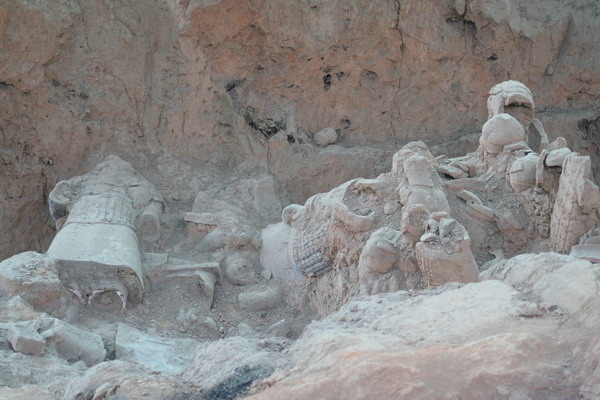
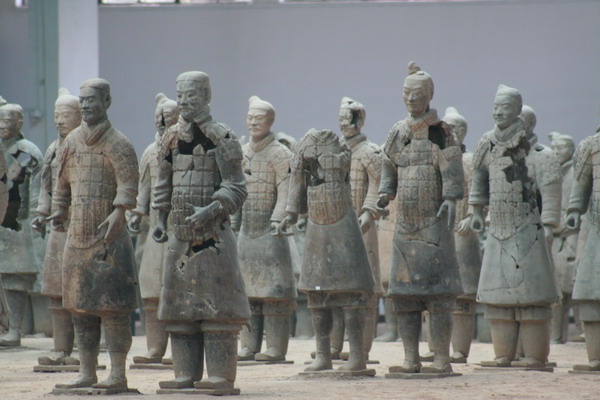
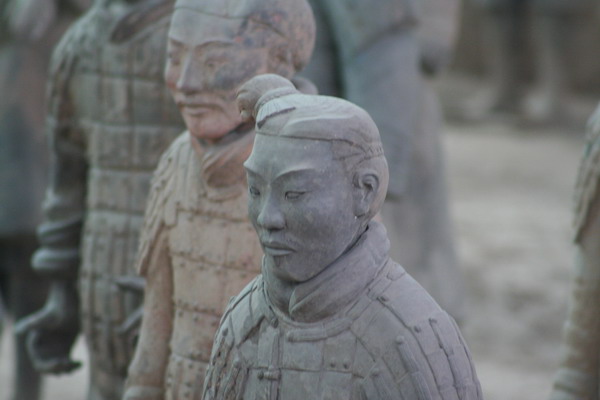
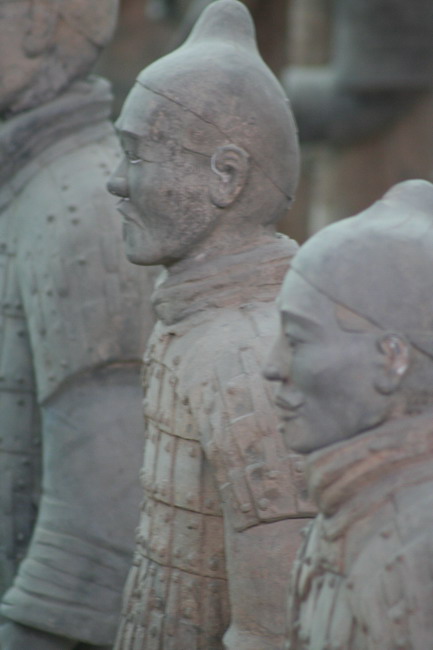

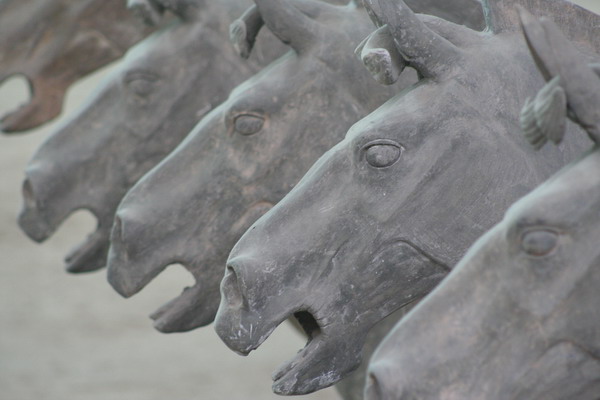
There are three pits that contain the warriors. The first is the largest and most spectacular. After we finished wandering around the first pit, we took a break for lunch. There we had a tasty lunch, that included hand made noodles by these cooks.
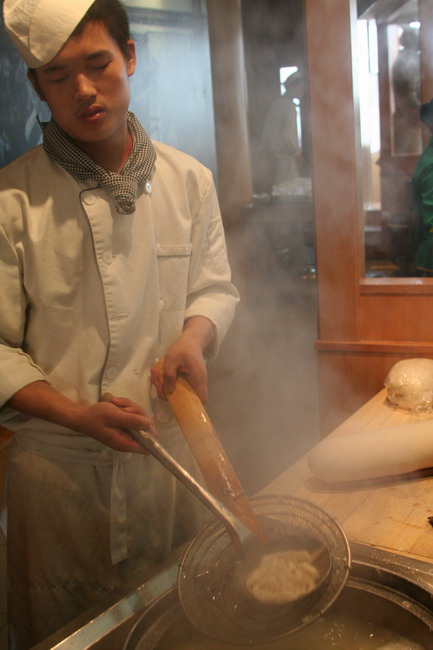
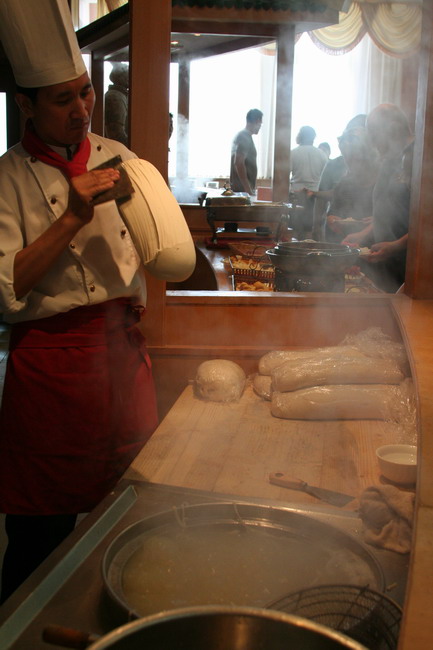
Also on the grounds there is a small museum that contains a well preserved example of each type of warrior.
This is the kneeling archer.
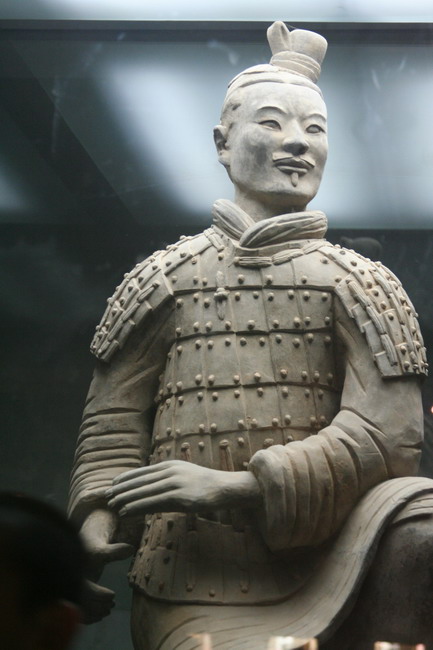
An officer.
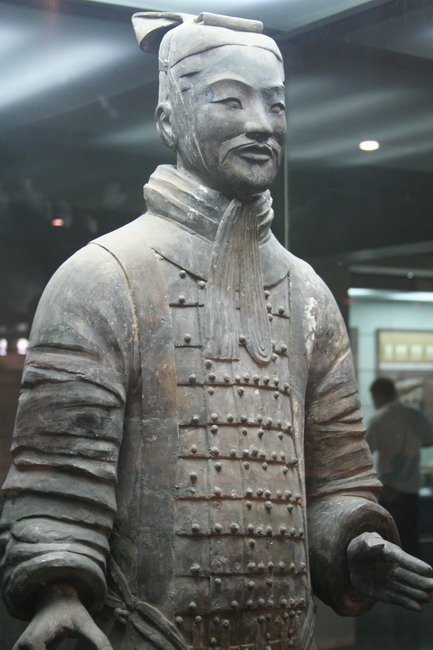
A general.
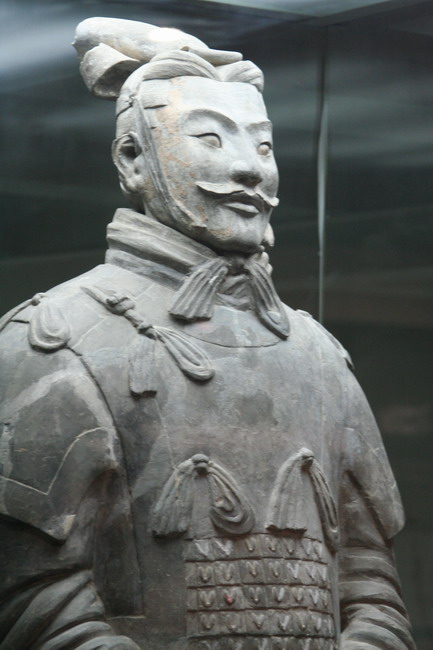
A cavalryman.
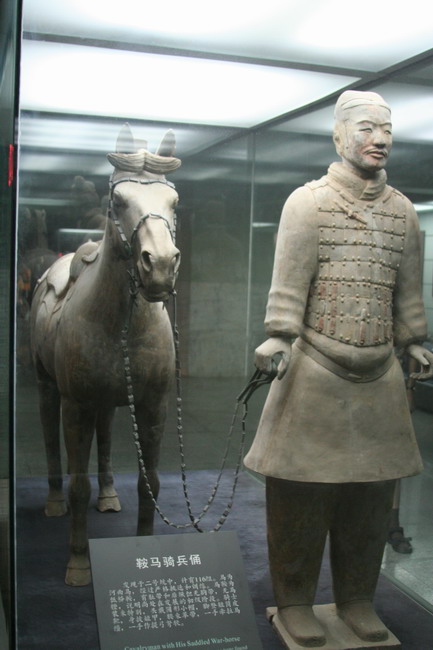
A standing archer.
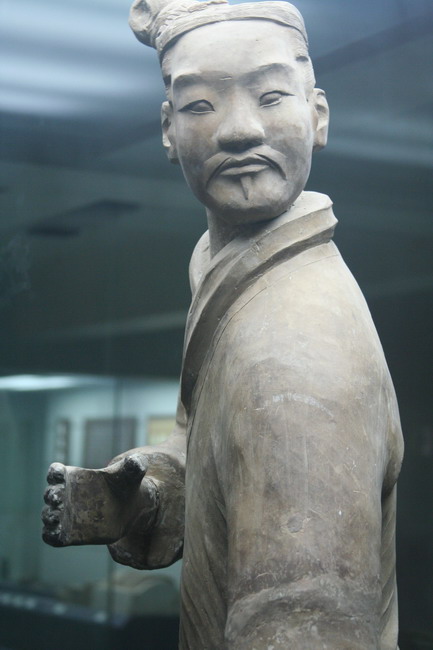
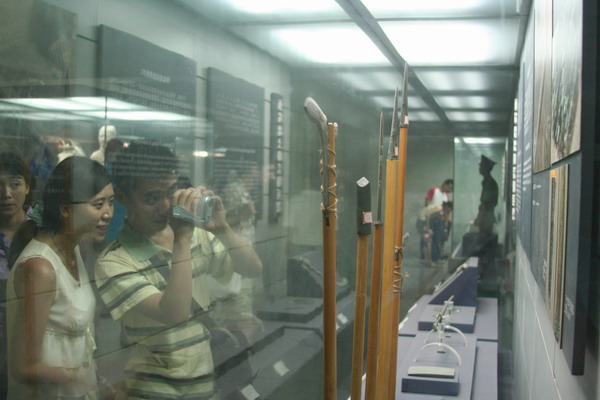
As you can imagine, there were lots of tour groups. This is one common way to identify everyone in your group…
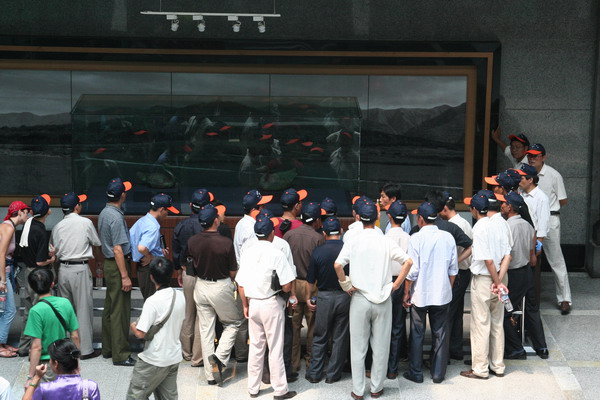
We also visited a factory that makes modern versions of the statues. While the originals were painted in vibrant colors, the replicas are made to look like they were when the warriors were unearthed (although some still had paint when first excavated, the paint quickly disappeared). The bonus was that we were able to see the process and get up close and personal with the statues.
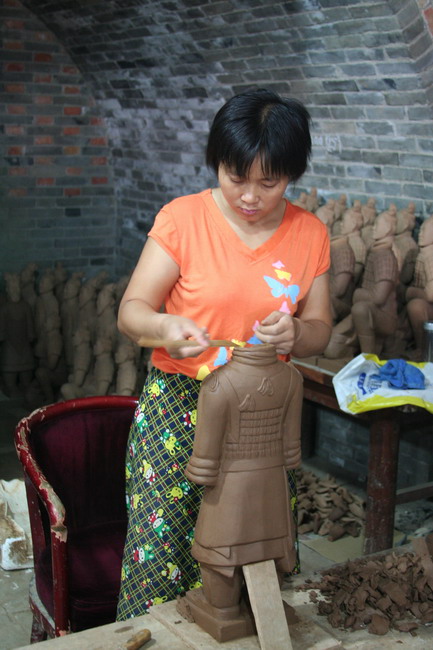
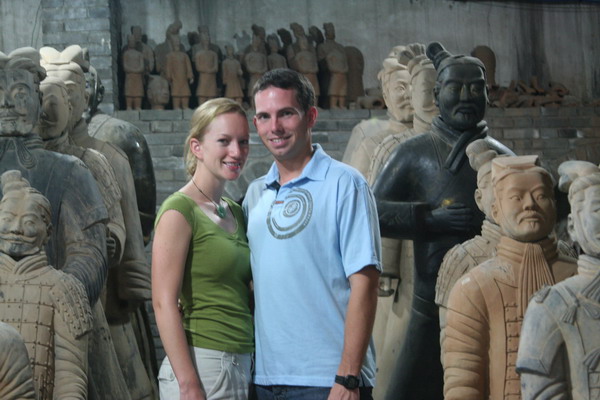
Wow, what an amazing site and that fact that they were recently discovered, with possibly a vast trove still to be unearthed, made this visit even more memorable.
The last entry will look at more life in Xi’an and a little about the silk making industry in China.
–Jim
Day: August 20, 2006
China Part 4 — Xi’an and World Park
We had mixed emotions about our last day in Beijing. Our main stop on the itinerary was to a place called World Park. It’s a park filled with replicas of the world’s monunments at one tenth size. While it was somewhat interesting, we mostly got the feeling that it was a very touristy with not the best construction.
However, there was a crocodile and elephant show done by some Thai nationals. The show was entertaining, but we heard that if zoos are like prisons for animals, then the zoos in Beijing were like death row. So, suffice it to say, that as fun as the show was, we came away feeling sorry for these poor creatures.
That said, here are the images from the show.
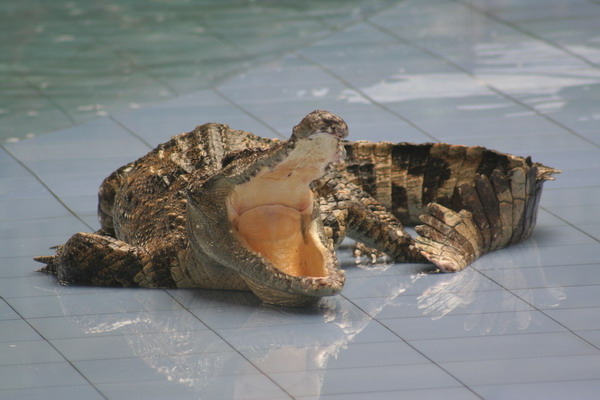
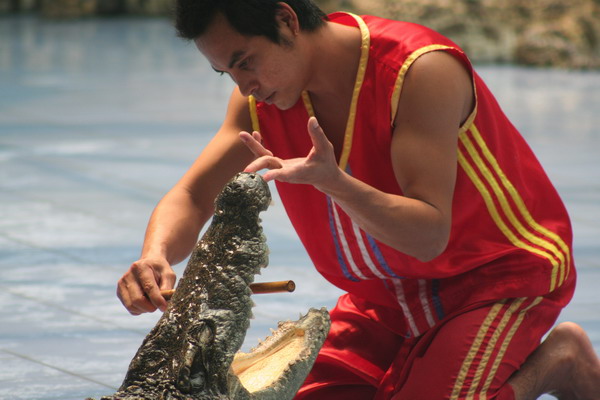
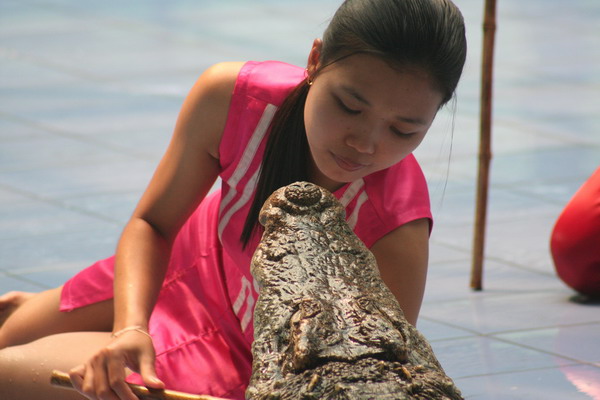
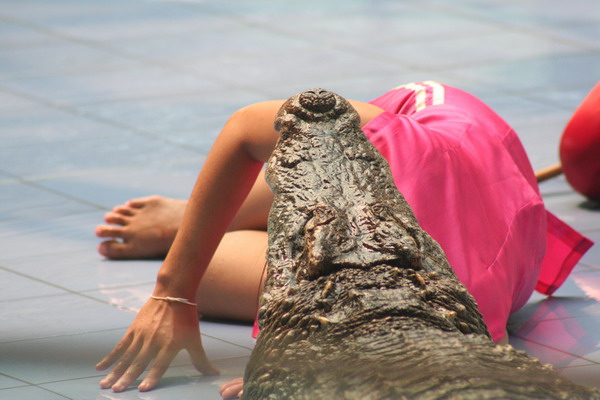
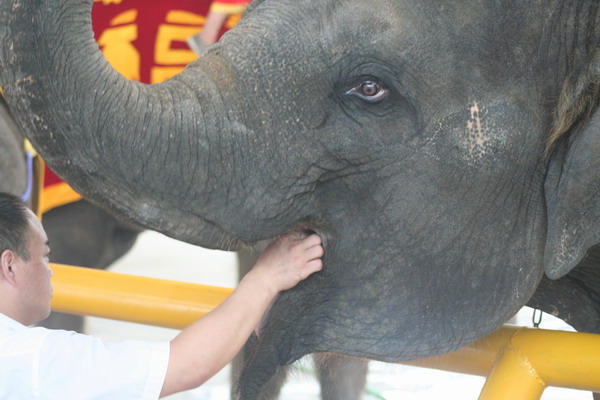

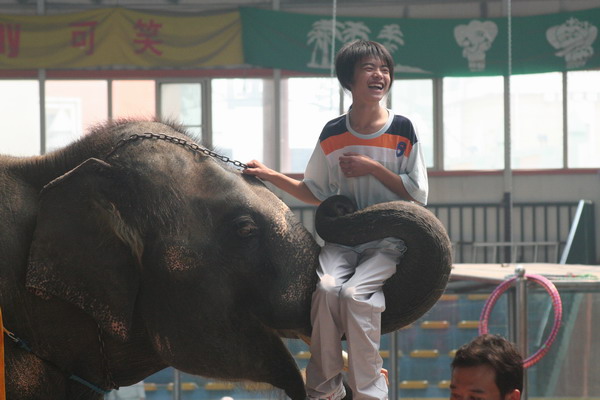
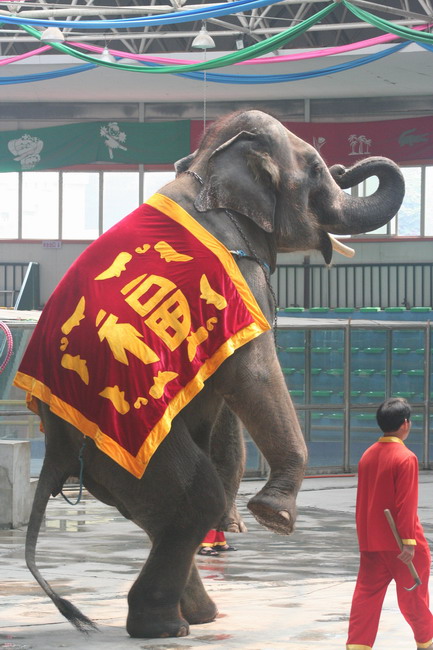
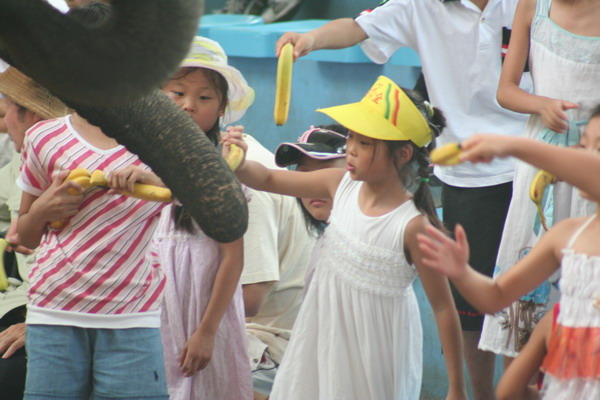

Then, back to downtown Beijing to visit on last temple.
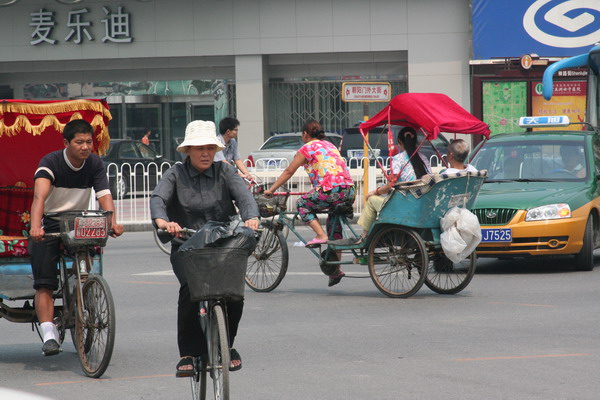
This time we went to Lama Temple. Lama, as you may be aware, is the term for a Tibetan religous (Buddhist) teacher (similar to a Guru). So, there were many young monks around and this temple was probably the most vibrant of all the ones we visited (even if the pictures don’t really show it…).
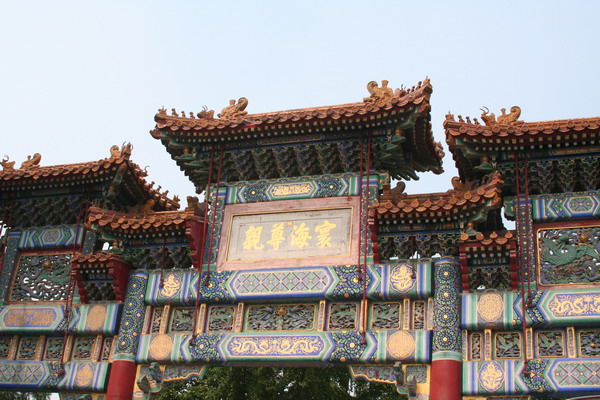
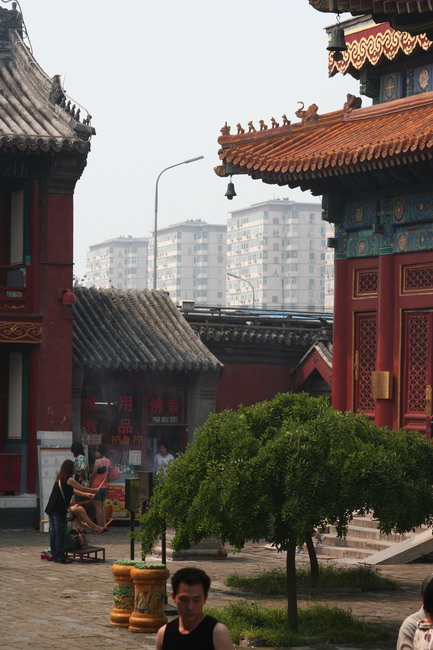
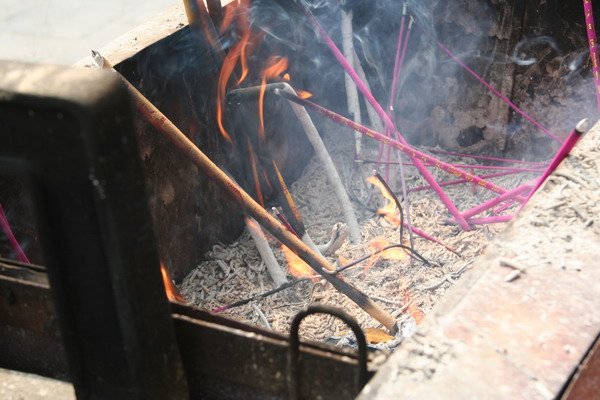
Here is our guide, Woo, again.

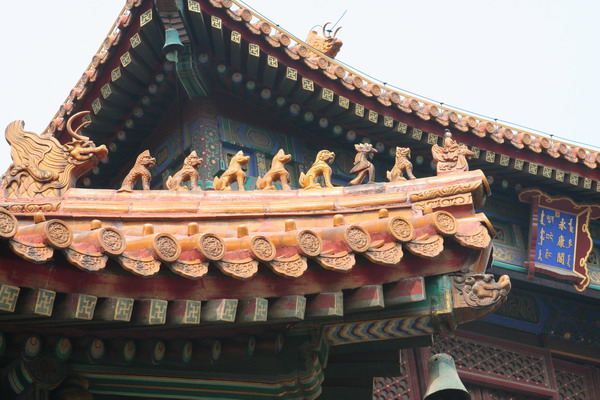
A couple more images of city life in Beijing.
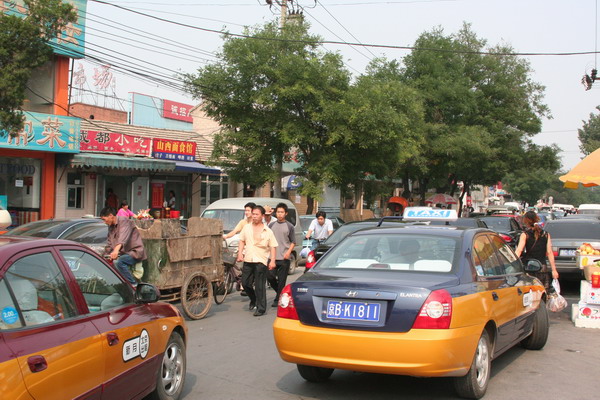
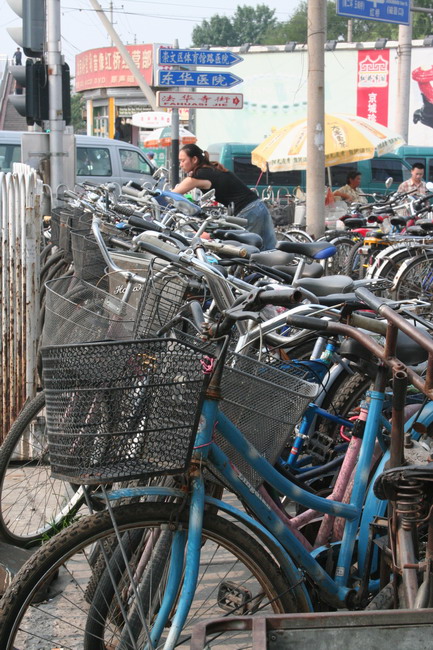
After our time in Beijing, we boarded a flight down to Xi’an. While Beijing is a massive megapolis at 16 million people and feels like an enormous city, Xi’an, is also a large city by all rights with over 6 million inhabitants. In fact, in all our travels in China, we felt that there were lots of people everywhere. Perhaps even more so than Japan. Of course with 1.3 billion people spread out over a vast country, it brings the People’s Republic of China down to the 71st most densely populated countries (Monaco is the #1, if you’re curious, while Macau and Hong Kong are #2 and #3 on the list, and the USA is #172 and Greenland brings up the rear at #230).
Xi’an, was the ancient capital of China, and was the first city in the world to reach 1 million inhabitants (although there is some dispute to that claim). Also, and more notably, it was the eastern end of the Silk Road, when the city was known as Chang’an.
The first stop when we got to Xi’an was to visit the Big Goose Pagoda and the Tang Dynasty Arts Museum.
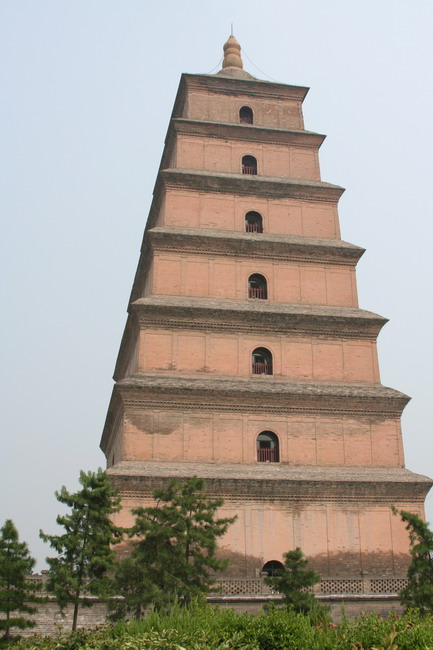
There were many interesting people also visiting the Pagoda.
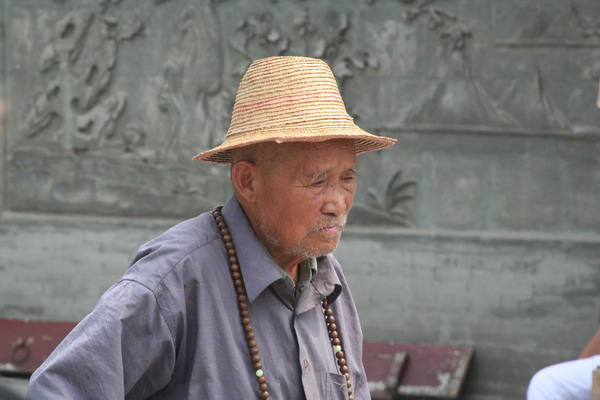
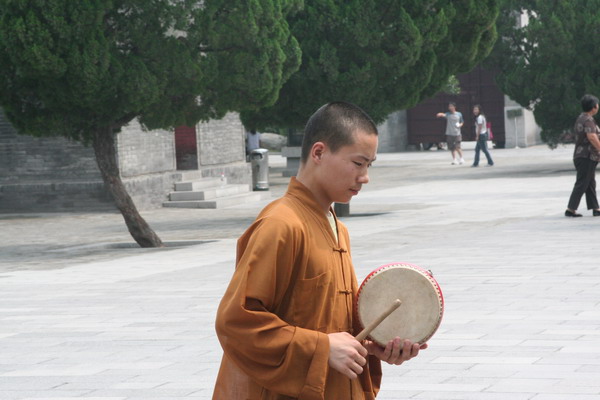
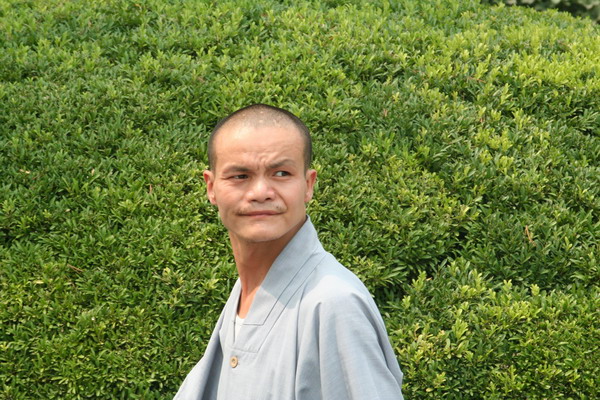
The next morning, we got up early and visited the city wall of Xi’an, which although much shorter than the Great Wall, was larger and impressive none the less.
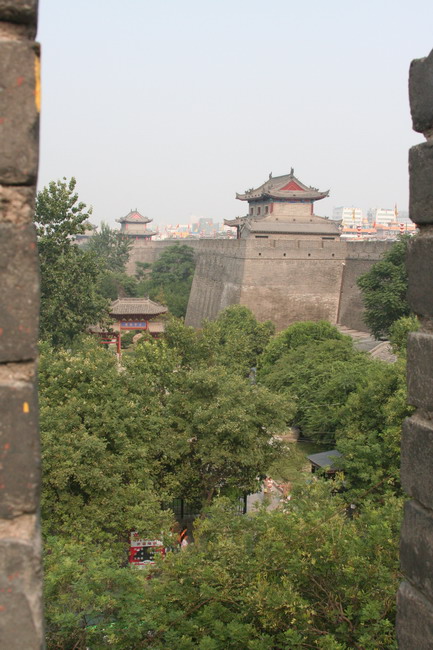
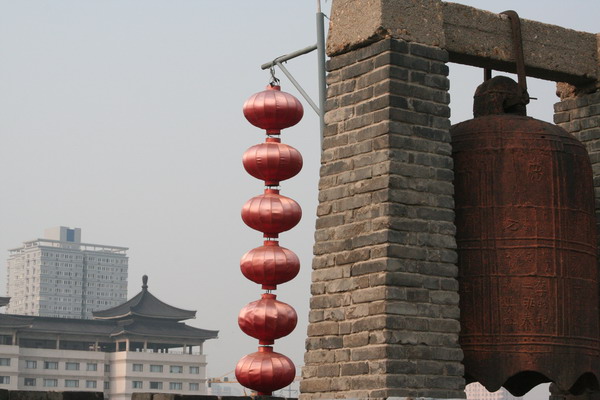

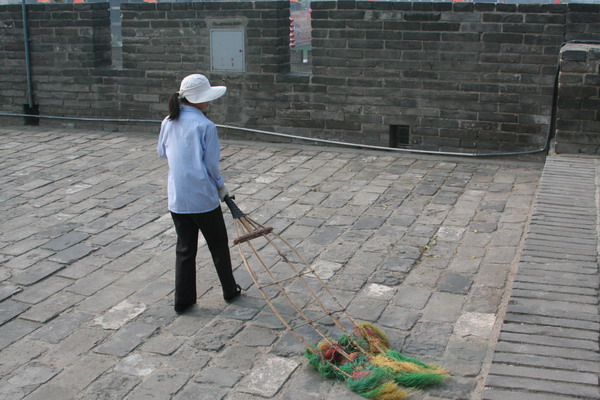
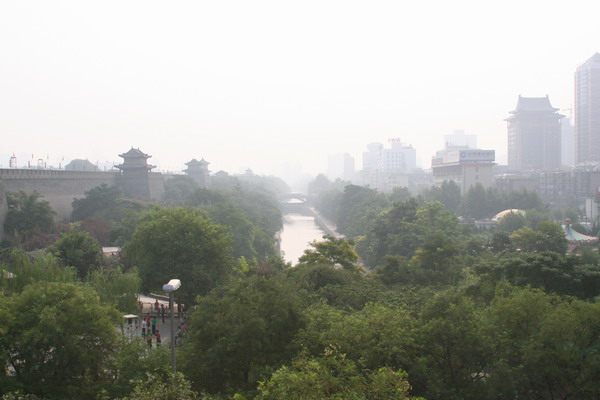
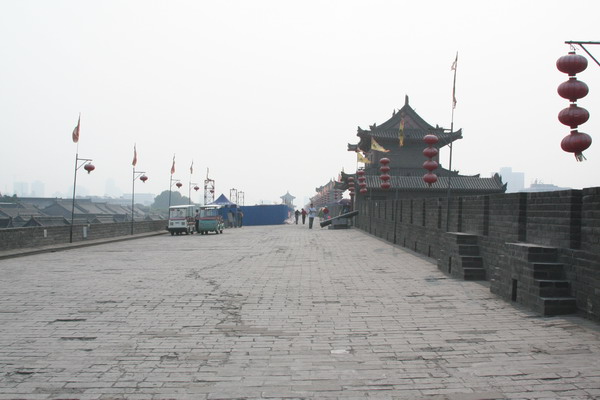
Back in the city, we found many more interesting people.
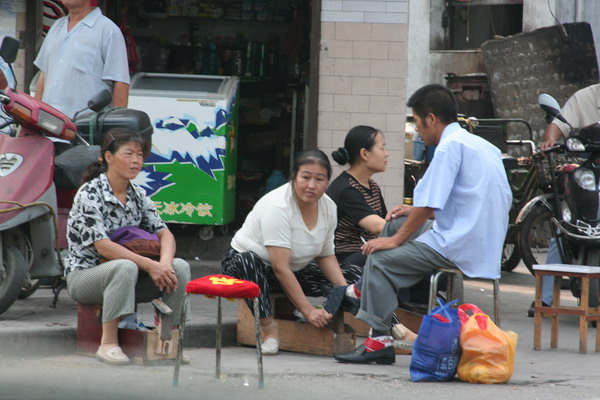
The man is demonstrating the fashion in China for men to keep cool (yes, it’s just the guys who do this … except one teenage Eurpean girl)
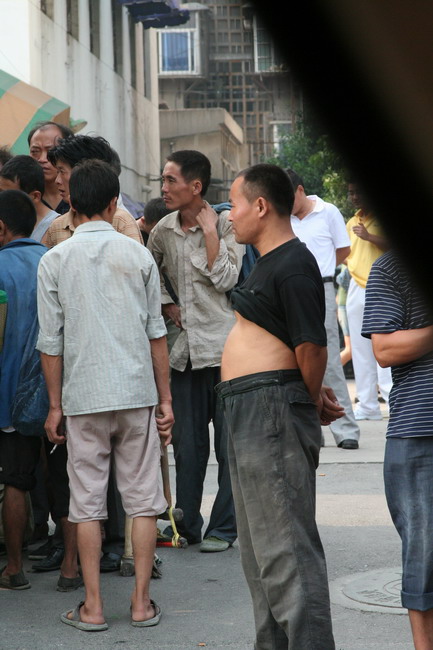
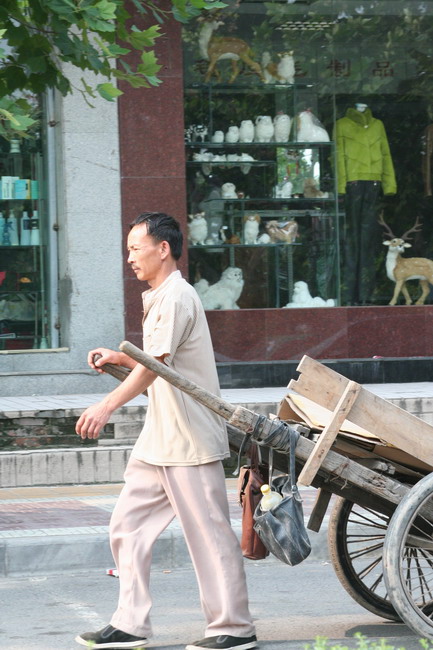
We also went to the regional history museum. It had very helpful displays that depicted the Chinese empires rise and fall through time.
This image was a taste for us of what was to come the next day. This is an actual Terra Cotta warrior from the archeological site outside the city.
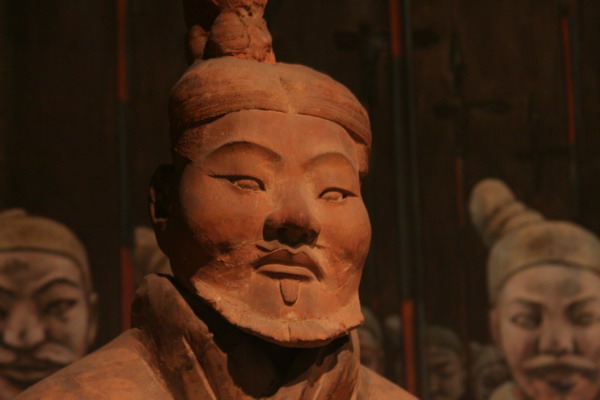
The next entry will of course will cover our tour of the magnificent Terra Cotta warrior site.
–Jim
China Part 3–Tiananmen Square (night) & Temple of Heaven
We decided to make a return trip to Tiananmen Square to see the difference the night made.
Here are some of the images.
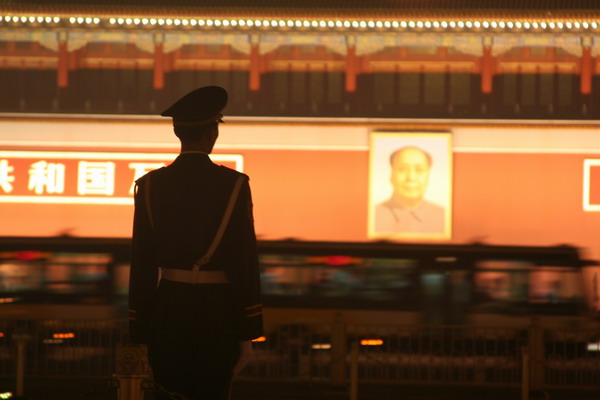
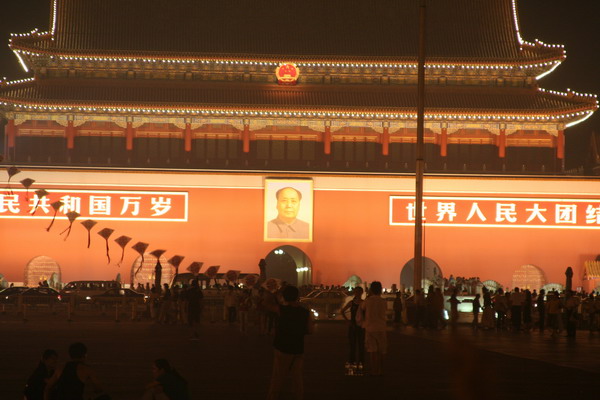
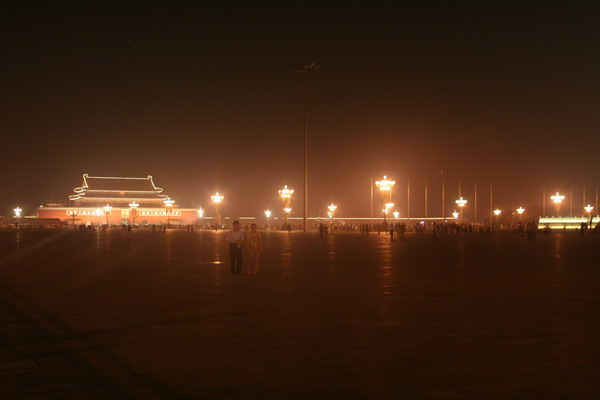
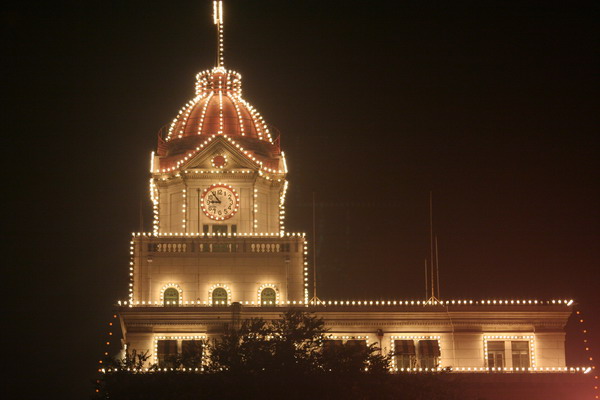

We also visited the Temple of Heaven. This very peaceful location, that is yet another example of Ming architecture, was where a large number of Chinese retirees came to relax. There were people doing all kinds of recreational activities (board games, dancing, singing, and rythmic gymnastics below).
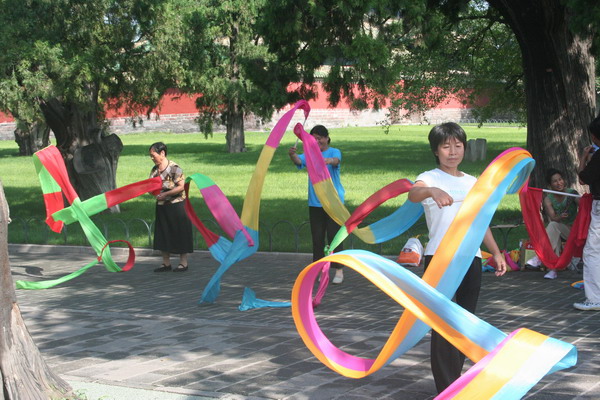
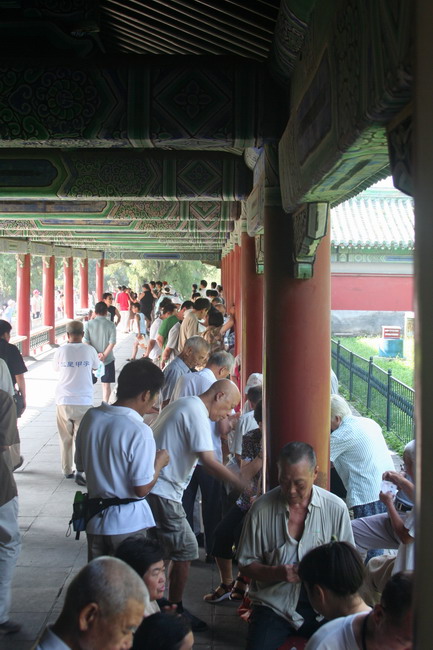
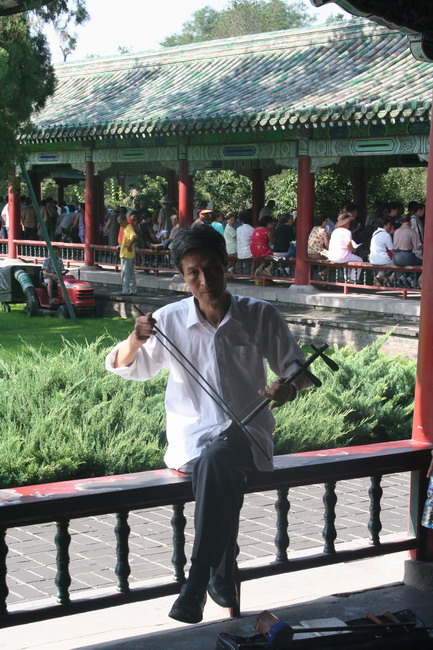
The main feature is Hall of Prayer for Good Harvests. It’s 38 meters high and the round structure symbolizes heaven, which is contrasted by the rectangular base (and walls) which are the earth.
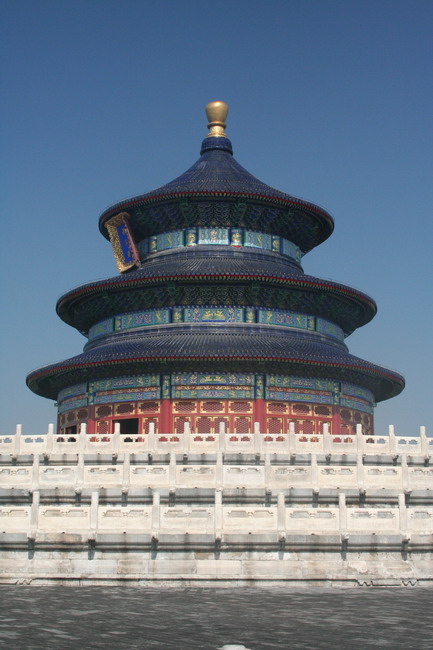

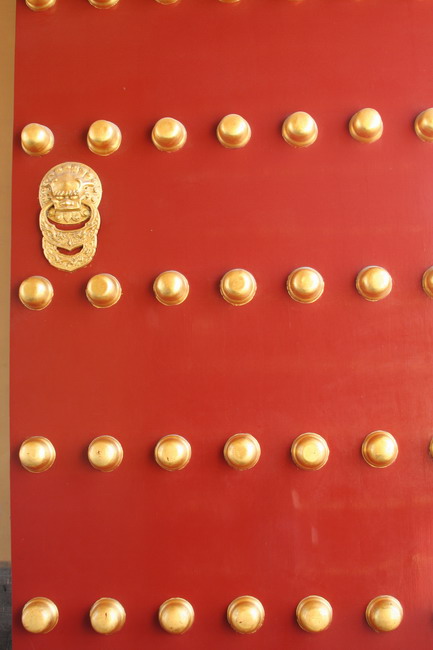
Next stop was a little cultural exploration in the form of shopping.
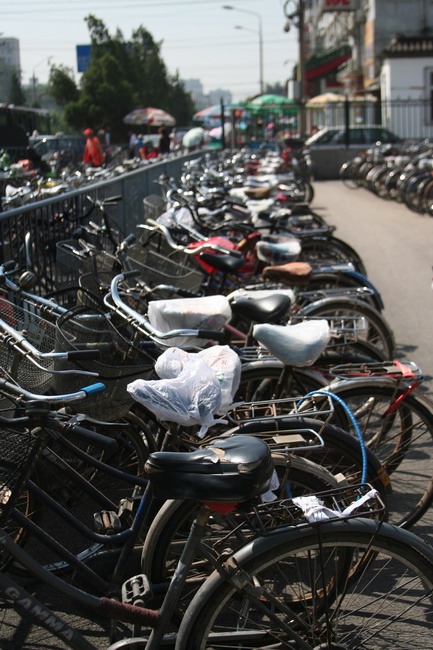
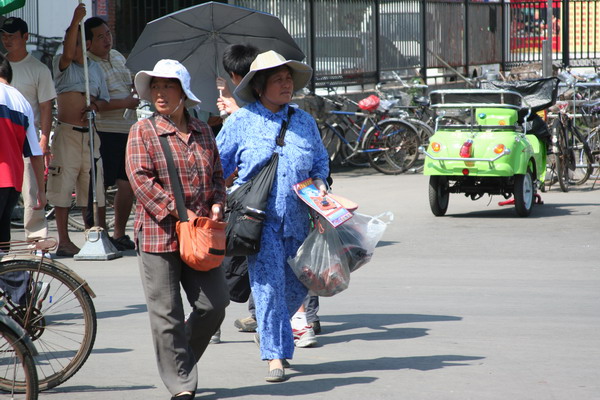
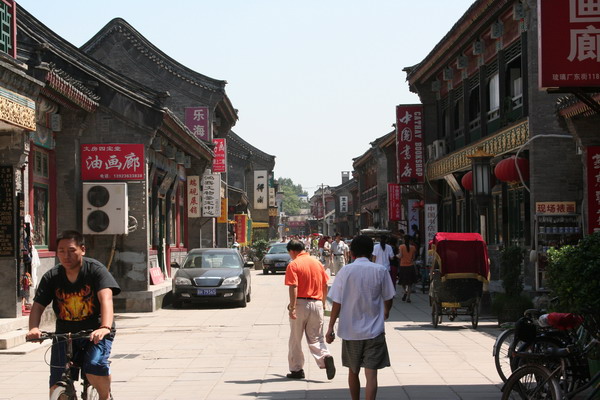
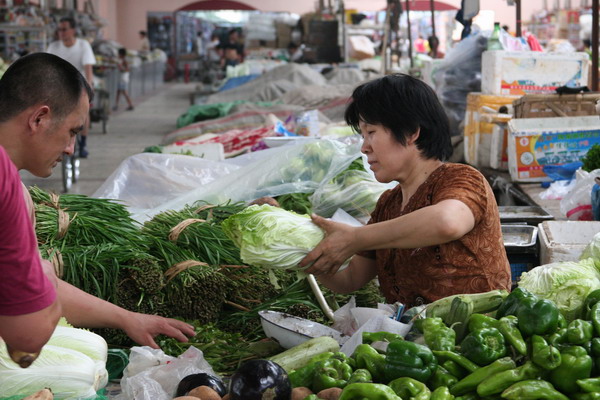

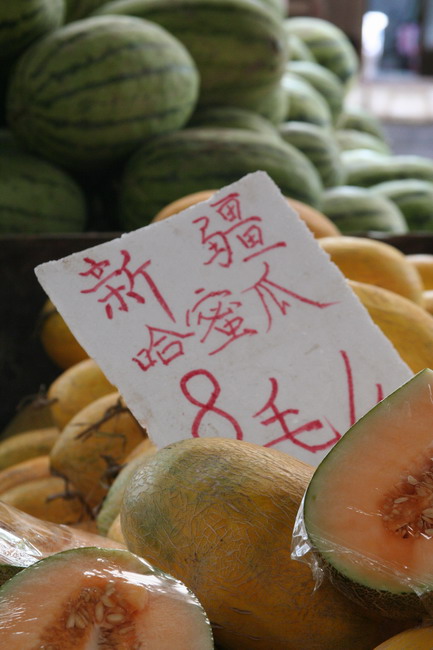
These are Dragon Fruit (Anna really liked the way they looked and their real name is Pitaya).
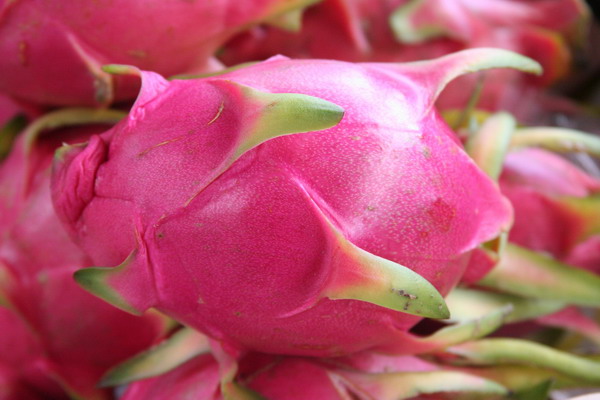
Then, there are the lychee fruits.

Another Chinese delicacy that we came to love were dumplings. Here is a group of cooks preparing them.
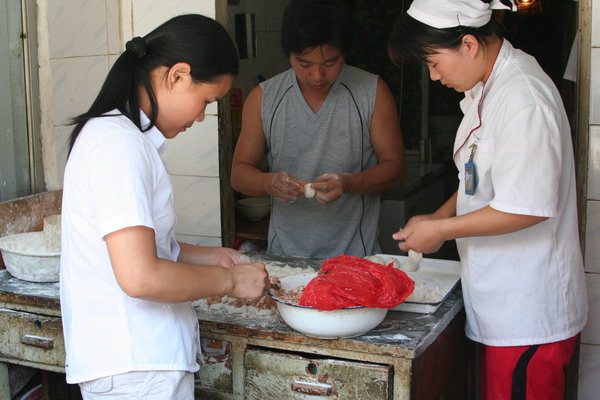
Not only did we explore on foot, we also went by pedicab. The areas we were exploring are called Hutongs (narrow alleyways). The roots of this type of urban development trace back to when Genghis Khan
laid waste to Beijing (known as Peking then). These narrow alley ways dominated zoning for the city for many centuries. However, they are rapidly being replaced by high rise apartment complexes (with much less character). Unfortunately, with the Olympic games coming to the city in 2008, the buildings there are being ruthlessly demolished by the government (with very little, if any, compensation to the owners). In fact, the atmosphere all around the country is of a headlong rush to modernize everything (oftentimes with extensive use of manual labor).
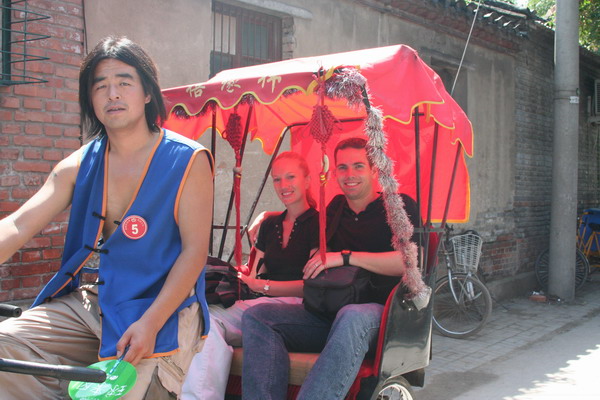
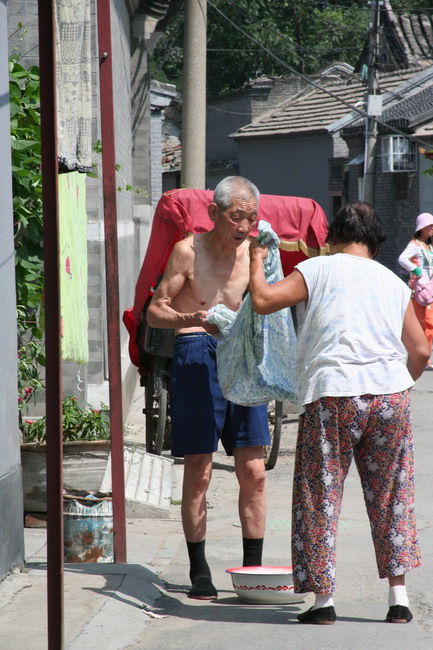
We also got a blown melted sugar sculpture of each of our birth years.
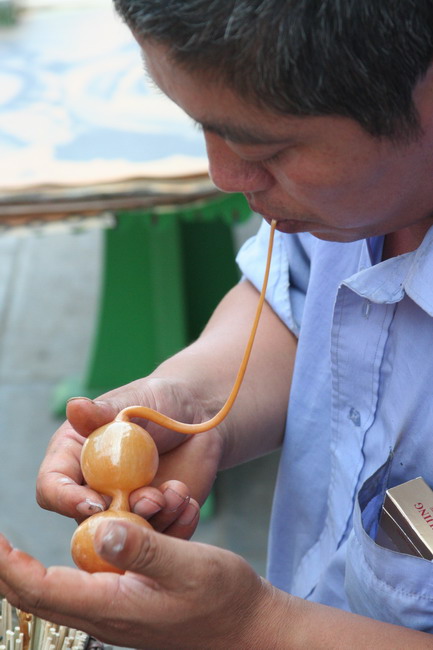
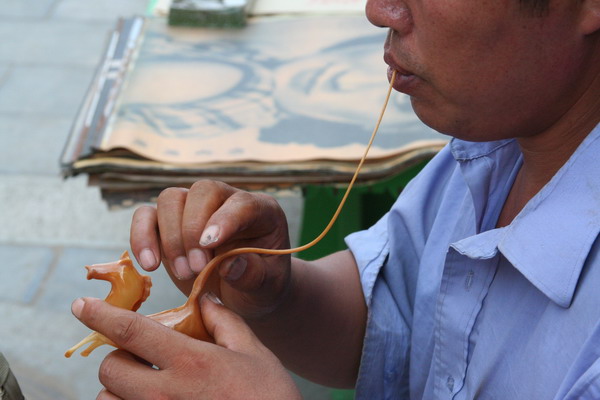
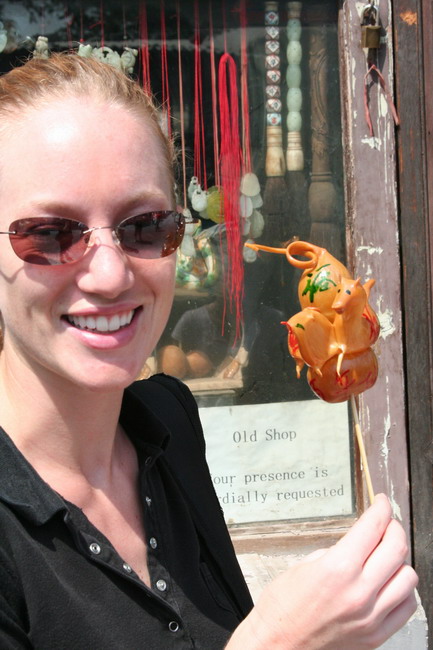
While it didn’t last long in the heat, it was fun to watch him make it.
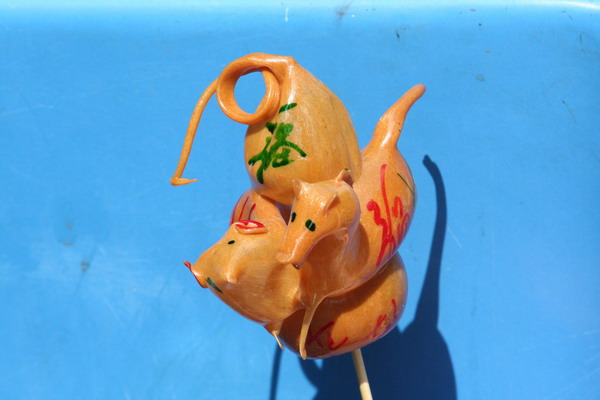
We also went to a tea shop that allowed us to sample different types of tea. Plus, they also had dried tea leaves with a chrysanthemum inside that blossomed with hot water.
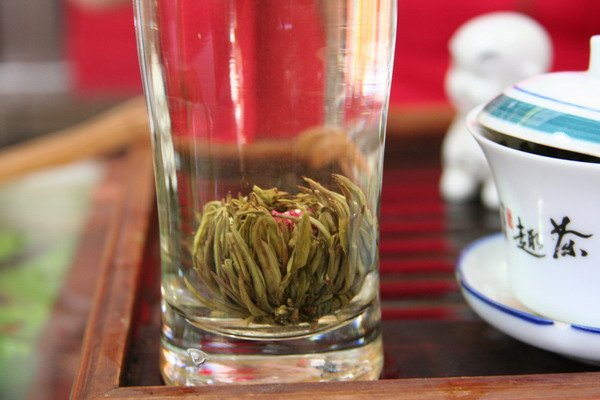
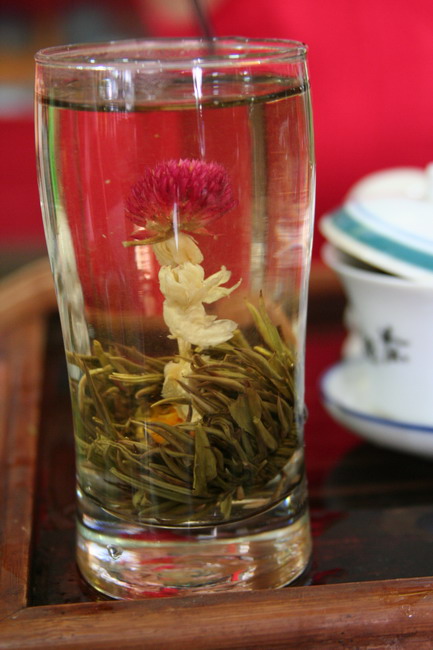
As a random picture, this is the view from our hotel.
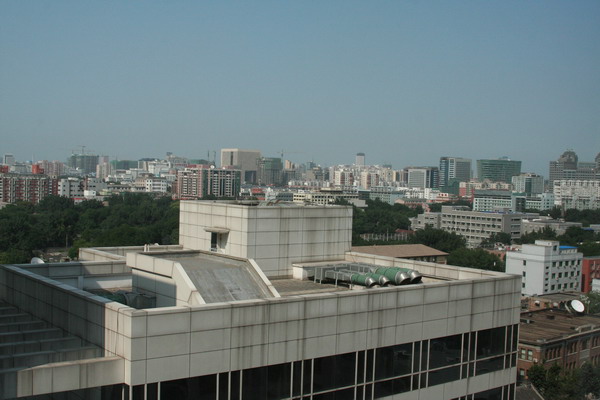
The next post will have our last pictures from Beijing and the first from Xi’an.
–Jim
China Part 2 — The Great Wall
OK, so I wasn’t able to keep up with the real time posts in China again. However, again, we have a huge number of pictures, so there will be a number of posts.
Next stop on the itinerary was one of the main reasons we went to China, to visit the Great Wall of China, truly one of the wonders of the world.
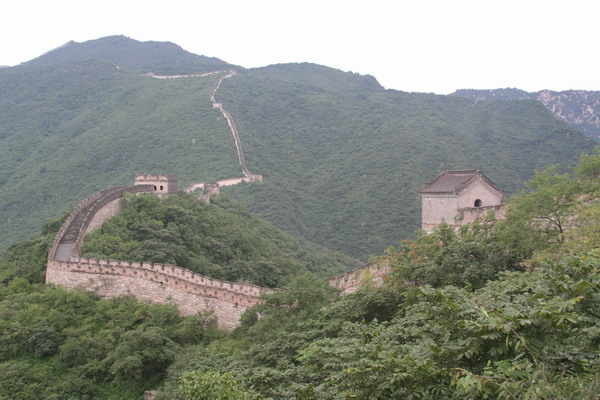
For those who don’t know much about the Great Wall (other than it’s really long wall in China). It was built and rebuilt at various times throughout history. However, it was started back in the Qin Dynasty (221-207 B.C.) when China was first unified by Emperor Qin Shi Huang, which makes the wall over 2,000 years old. They spent 10 years of forced labor and a massive human toll to build the original wall. This of course was very unpopular with the common people, since they were the ones sacrificing much and was one of the reasons that the Qin Dynasty was so short lived. However, during the Ming Dynasty (1368-1644) was when the wall took its modern form. During that time, over 100 years of effort went into making an impenetrable barrier, although it never really served as one. The idea was that at each guard house, sentries would light a fire to signal back to the capital Peking that an enemy was near (1 fire for 100 troops, 2 for 200 and 3 for 300 or more). As Gehghis Khan supposedly said, “The strength of a wall depends on the courage of those who defend it.” So, while it was never really impenetrable, it did serve a useful purpose of a convenient path to cross rough mountian terrain. Unfortunately, after the Ming Dynasty, the wall was largely forgotten and sections turned back into dust. Had not the tourism market resurrected it in the 20th century, the whole thing may have disappeared entirely. Now, there are several sections that have been restored to their original condition, as well as some that are in their more natural state. The place we chose to visit was called Mutianyu. It is a section 90 km northwest of Beijing and is about 2.5 km long. It was first built during the Northern Dynasties (386-581), but rebuilt during the Ming Dynasty. This section is between 7 and 8 meters high and 4-5 meters wide at the top.
Ok, enough description, here are our pictures of the Great Wall of China.
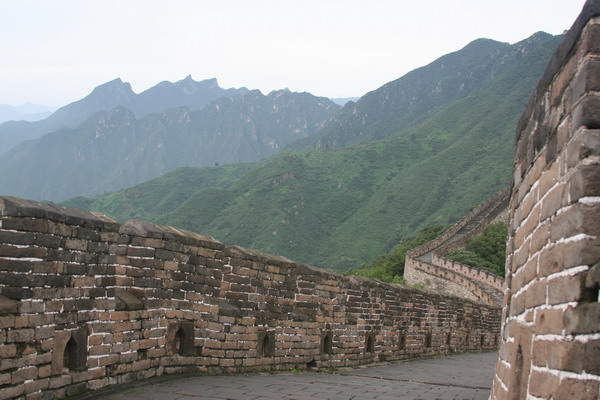
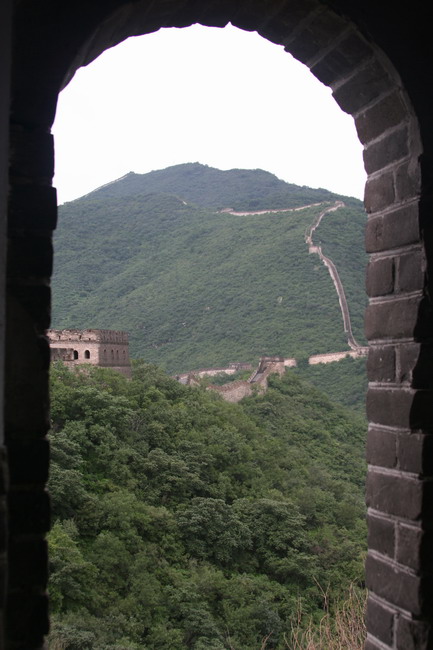
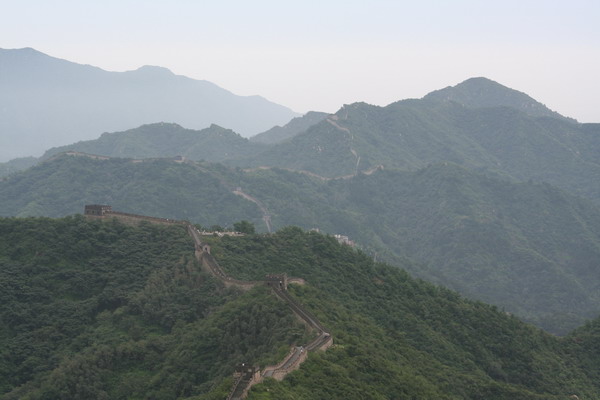
At the end of the wall, there was a rampart at the top of 400 stairs that offered a commanding and serene view of the surrounding area. Anna found this perch a very agreeable spot to watch the few other tourists climb the wall.
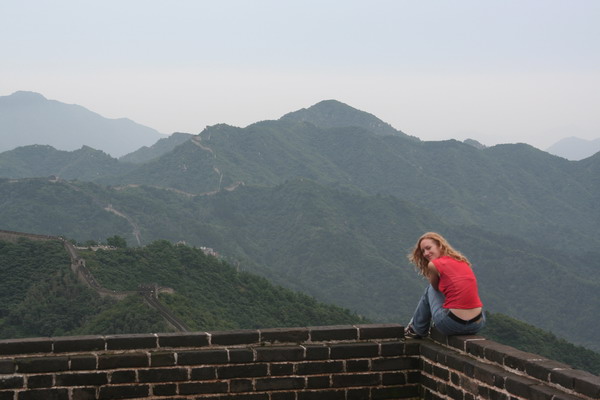
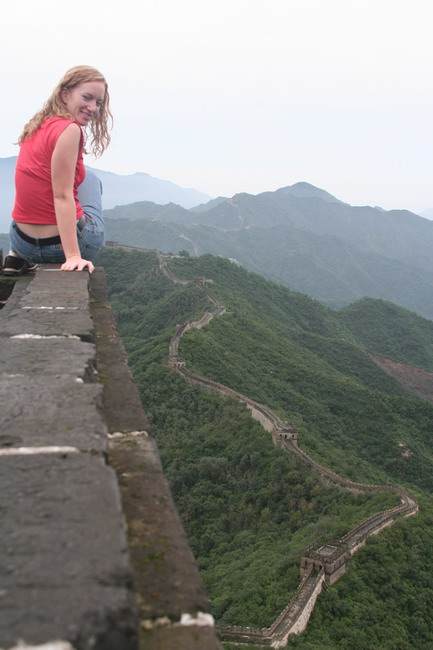
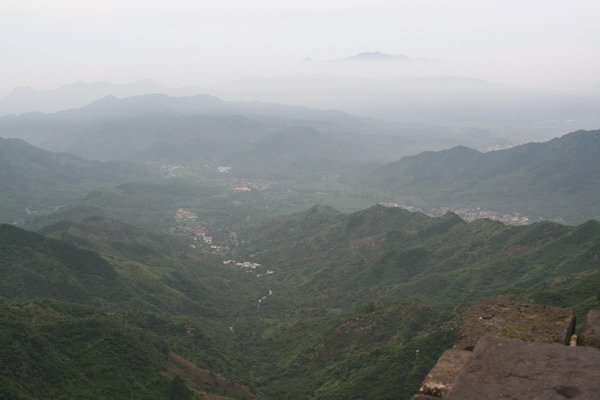


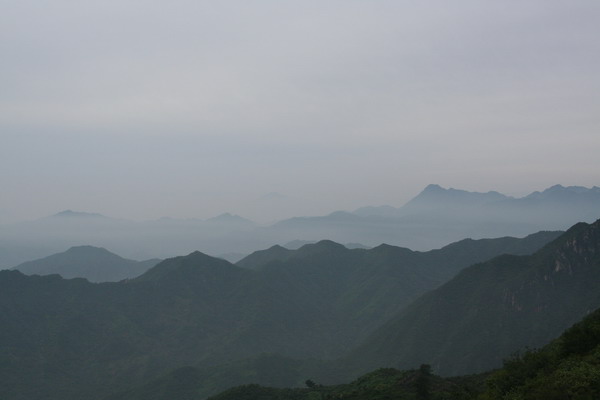
As you can see, after centuries of neglect, the wall has deteriorated quite significantly.
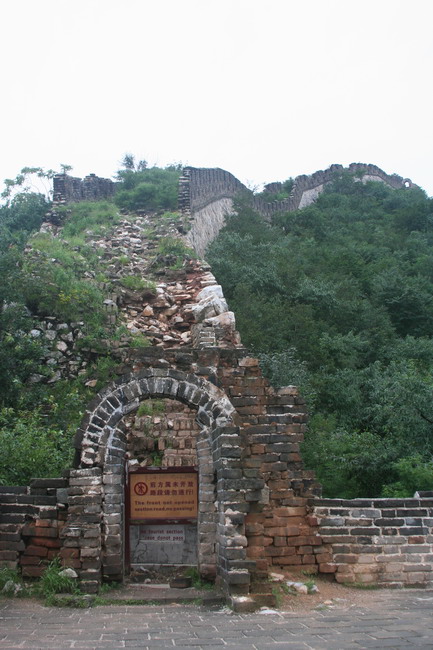
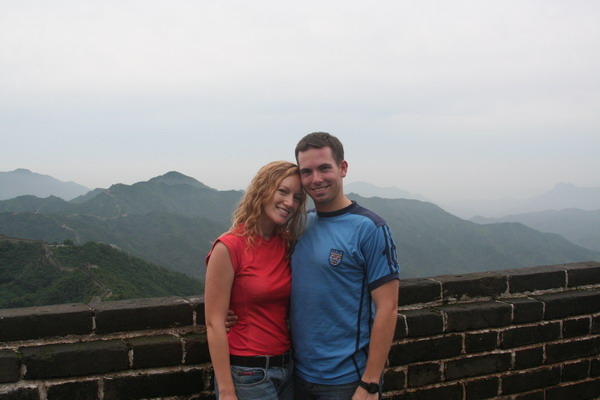
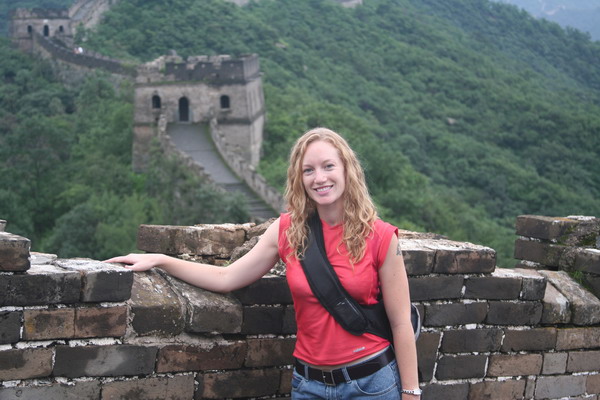
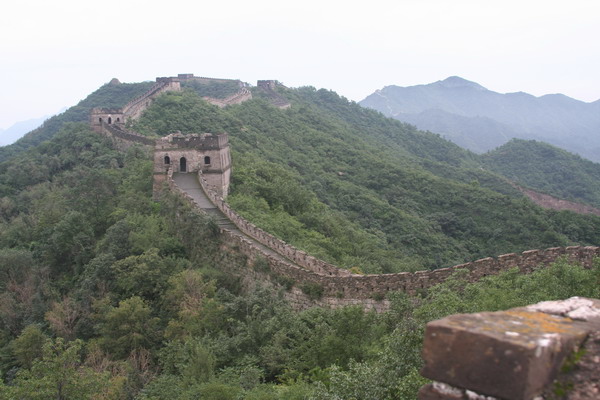
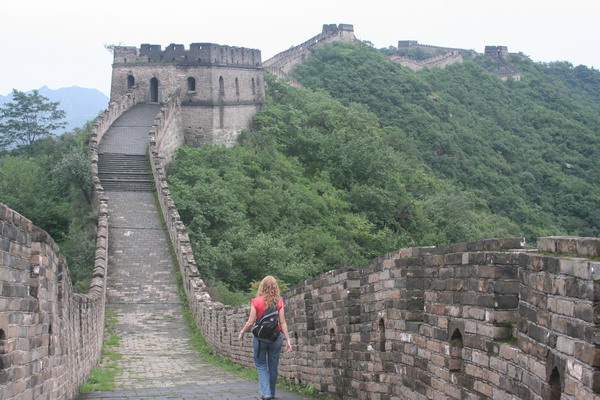
You can see one of the guard towers here.

There was even one hardy vendor who was willing to bring snacks and drinks up the mountain to hungry and thirsty tourists (with a little help from his friends here). Amazingly, the price was about the same as other places much further down.
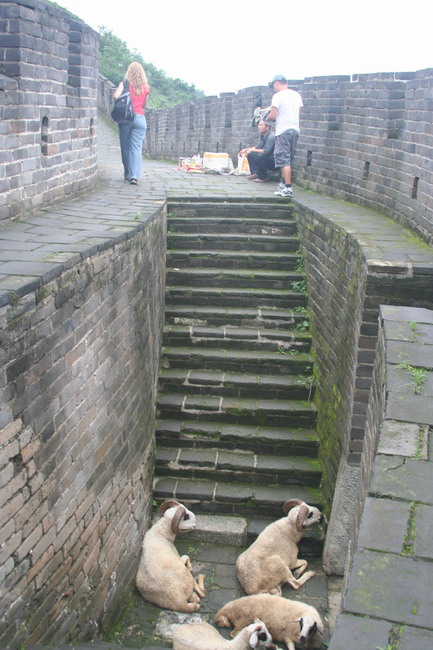

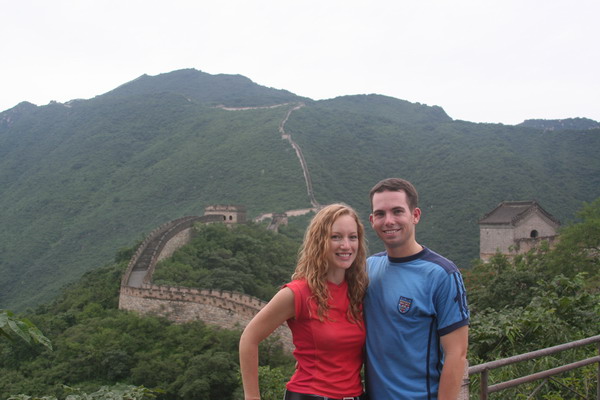
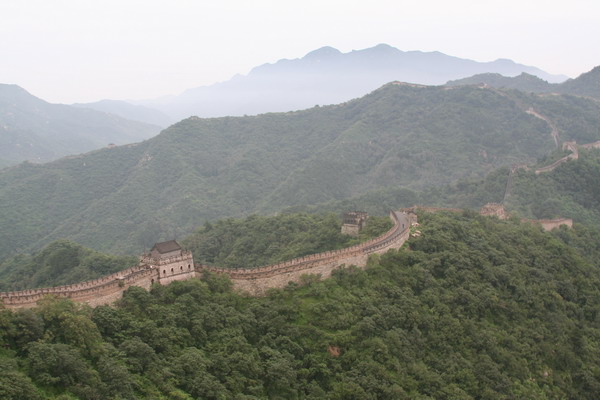
After we finished exploring the wall (although we could have easily stayed and explored a couple more sections), our guide and driver were ready to take us to our next location. Let me take a couple sentences to say just how nice it was to have a personal escort throughout our time in China. Normally, as you probably figured out by now, we like to blaze our own trail and explore on our own. However, in China we decided to use a personal guide and driver. It made things so much easier. Between our everpresent Lonely Planet guidebook (which is our favorite travel companion) and our guide, every question we had was answered. 🙂 Plus, a driver was there to drop us off as close as possible and wisk us away when we finished.
Here they are, ready to head back to Beijing.
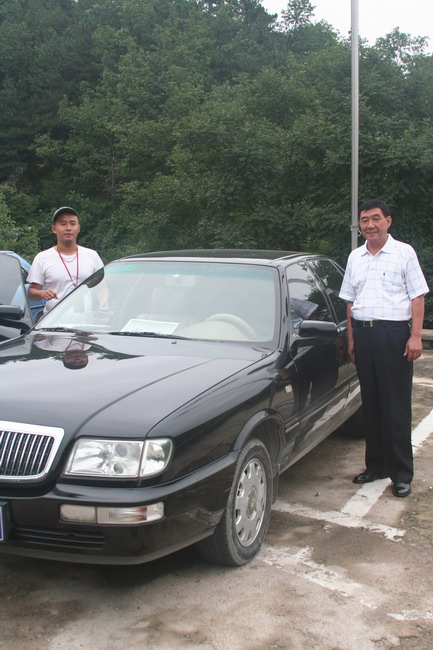
While China is certainly still a third world country, it has a couple unique traffic features. While not unique to China, they are certainly interesting to note (and not a bad idea for the US as well).
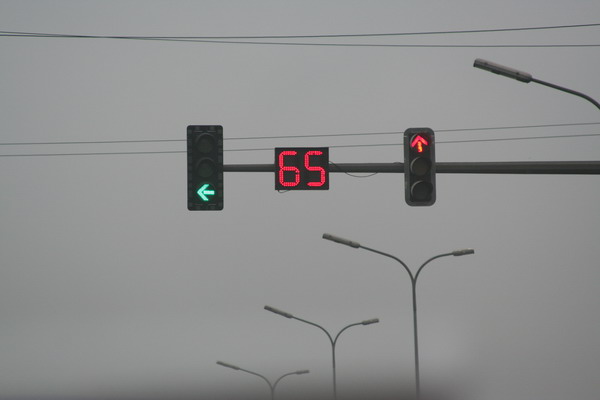
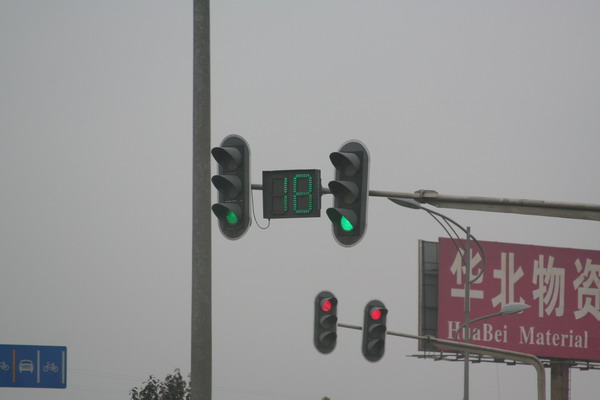
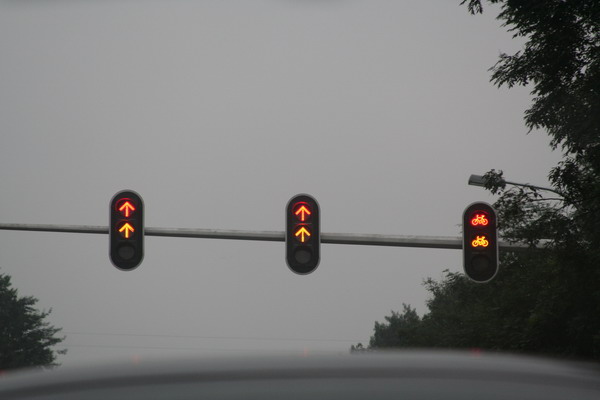
We also stopped by the Ming Tombs. This is the final resting place for 13 of the 16 Ming Dynasty Emperors. It had a very serene Sacred Road that led to the tomb.
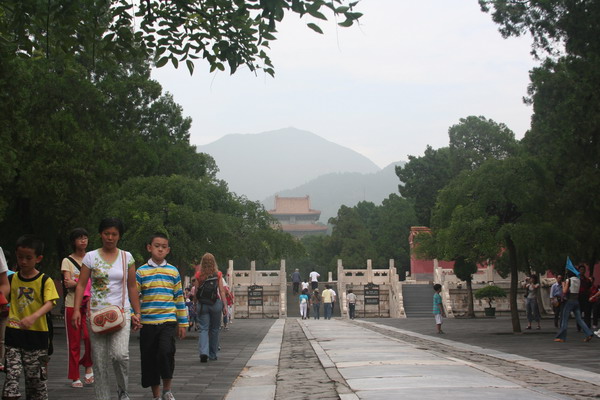
However, perhaps one of the most interesting parts of the tour was a trip into Dingling. It’s the underground tomb of Emperor Wanli. You can see from this picture that people liked to throw money on his throne.
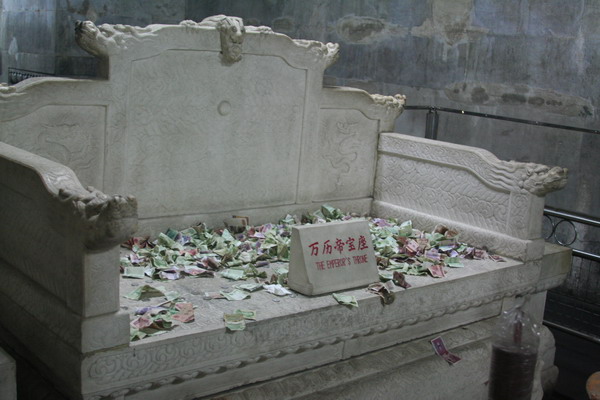
However, apparently, people didn’t feel the same way about his wife…
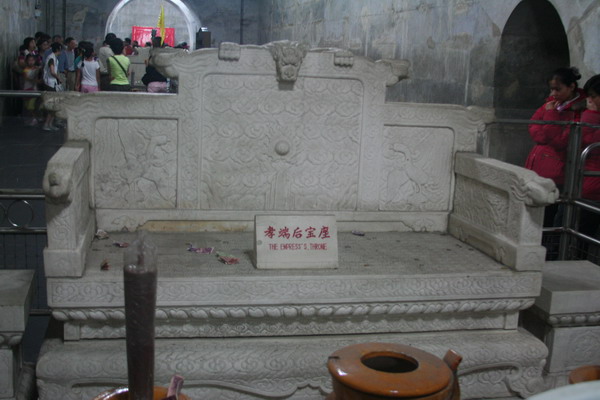
This is an interesting perspective looking back into the burial chambers.

After dinner, we came outside to this beautiful full rainbow.
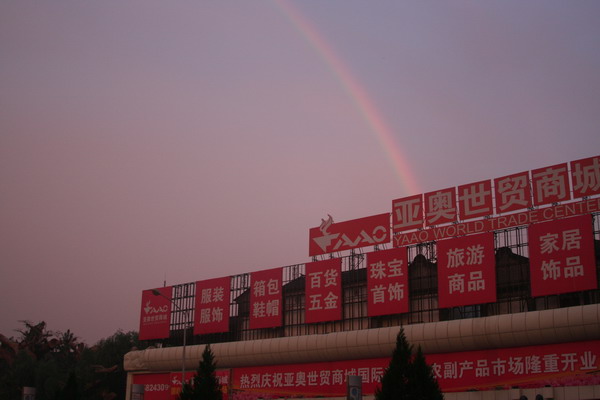
The Great Wall was without question our favorite site to see in China. So, this was an outstanding day. 🙂
Not to worry, there will be several other posts of our China adventures.
–Jim
